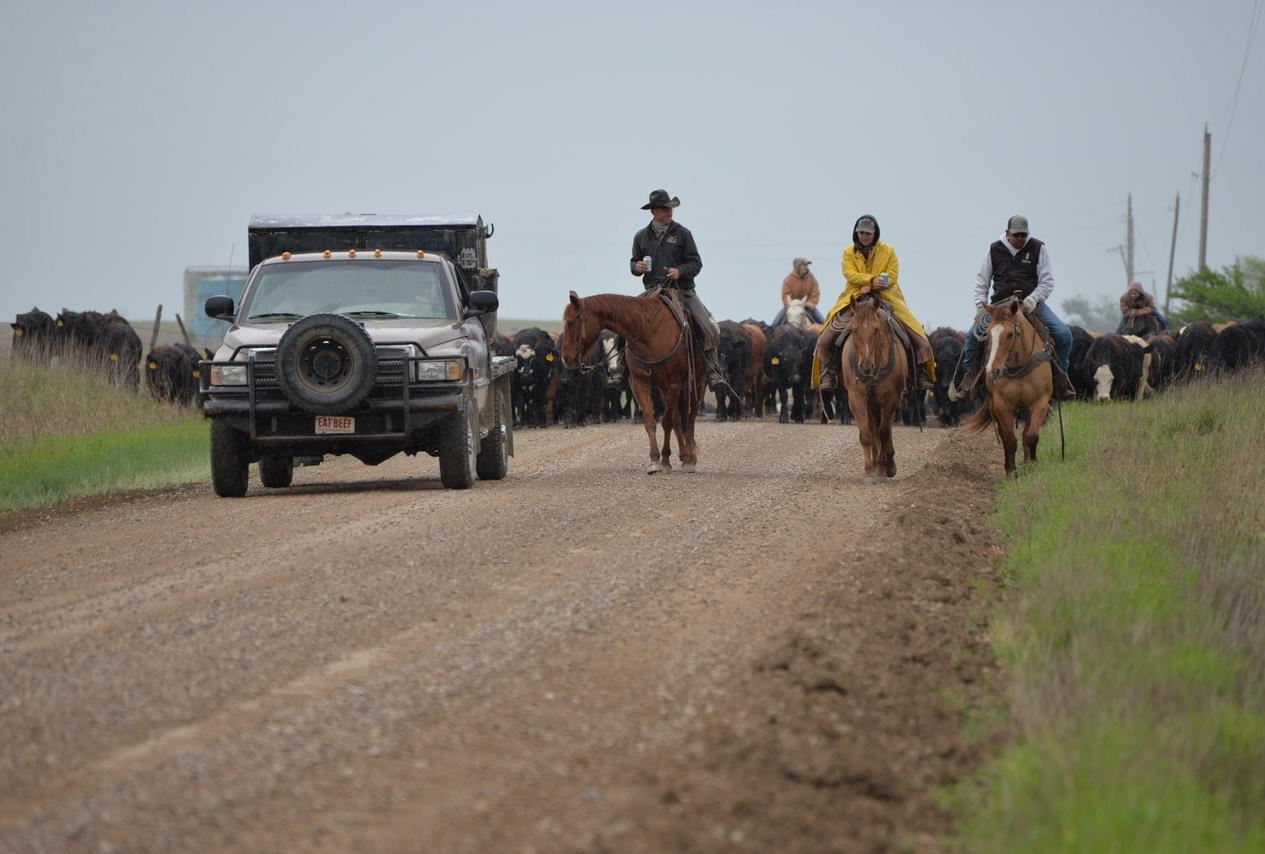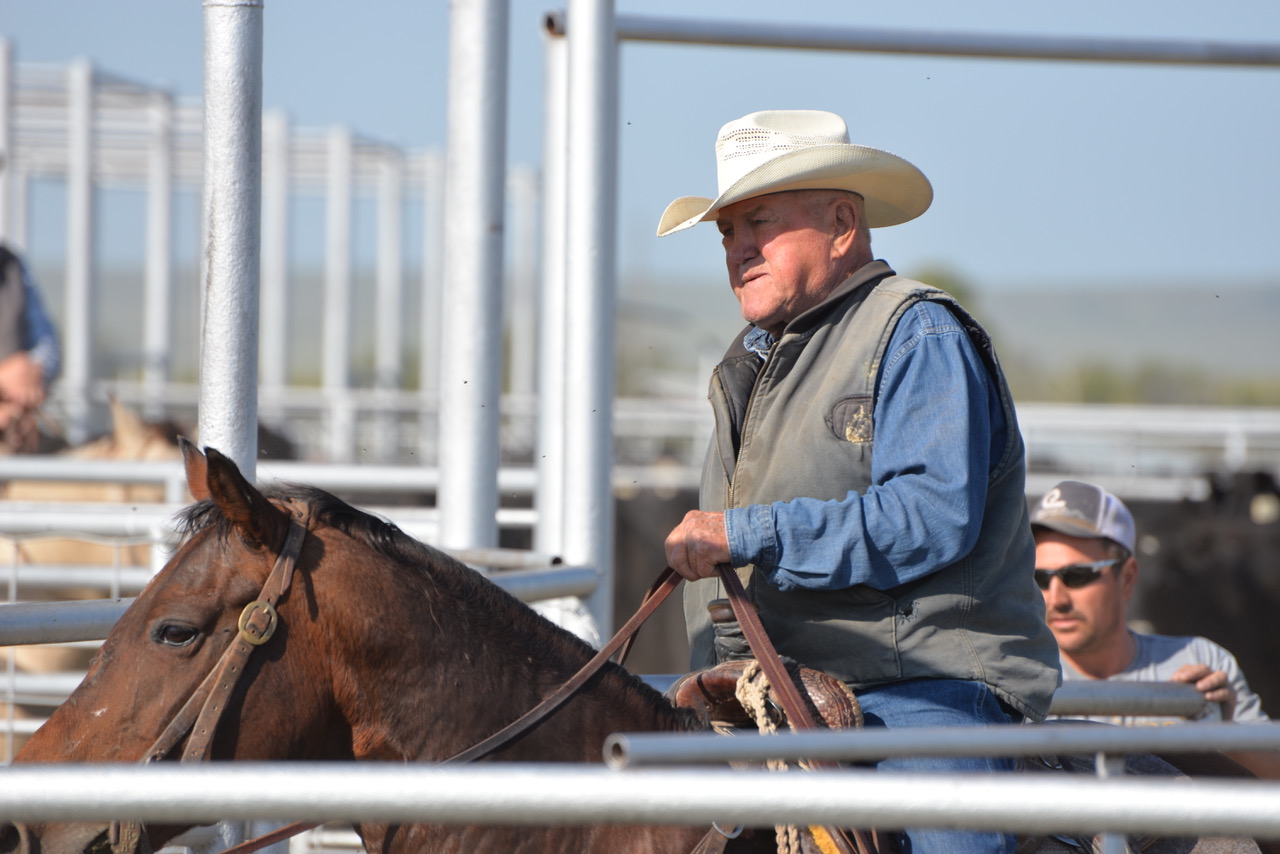

Ranching on the Tallgrass Prairie
August 7, 2025
In 1924, the cattlemen of Greenwood County met at the Greenwood Hotel in downtown Eureka to lobby for a local Cattlemen’s Association. The hotel was “the” place for cattlemen to meet. A 1911 article in the Kansas City newspaper noted, “The lobby of Eureka’s largest hotel is a sort of small livestock exchange. There are the same men with broad-brimmed hats and whips that the visitor sees in Kansas City’s exchange building in the first floor’s corridors. Always they are ‘talking cattle.’” That was true in 1924 too. For twenty years, there had been a Kansas Cattlemen’s Association that addressed the concerns of the day—cattle theft and fair railroad rates—but the Greenwood County ranchers wanted something more unique to the tallgrass prairie.
By 1925, the Greenwood County Cattlemen’s Association was up and running right in the heart of the Flint Hills. A year later, the annual Cattlemen’s Day event was held to celebrate the end of the grazing season and to highlight the significance of cattle ranching and its traditions in the Flint Hills. There’s been one nearly every year since. This is cattle country.
Nowadays, the Greenwood County Cattlemen's Association is committed to promoting and preserving the heritage and traditions of ranching while also embracing new technologies and practices to improve the quality of agriculture and the sustainability of the cattle industry.
Wayne Bailey loading cattle, from “An Oasis on the Prairie” documentary, courtesy of Prairie Hollow Productions.
The Flint Hills, then and now, are known for its large pastures where cattle are brought in to graze on the tallgrass prairie. Many of the families living here raise cattle for a living. Many families have been here for generations. Some ranchers say they raise cattle; others quip they raise grass. This is especially true in Greenwood County, where fewer than 6,000 residents are spread across 1,150 square miles.
For the Flint Hills Discovery Center and Prairie Hollow Productions, the centennial of the county’s cattlemen’s association provided an opportunity to explore the time in Kansas history when cattle were first brought onto the prairie, the displacement of the Indigenous population to make way for the rising cattle industry, and the importance of the cattlemen’s association over the past 100 years. “An Oasis on the Prairie: The Ranchers of Greenwood County” is a new documentary debuting this fall that explores these stories and highlights the importance of family-based ranching traditions throughout the Flint Hills. It is supported by a Humanities Kansas Humanities for All grant.
Ranching is a way of life, as much as a business enterprise. The film features voices of ranch families who share their experiences and perspectives about what’s it’s like being part of the tallgrass prairie ranching community: common tasks, seasonal chores, weather worries, market fluctuations, changing technology, invasive plants, and livestock health.
The Flint Hills Discovery Center and Prairie Hollow Productions have worked together on five films that inspire people to celebrate, explore, and care for the Flint Hills.
“Through these documentaries,” filmmaker Dave Kendall shared, “we have learned about the history associated with the creation of the Tallgrass Prairie National Preserve in Chase County; met a diverse group of Prairie Women who play important roles in preserving, promoting and celebrating the Flint Hills; explored the manner in which the Santa Fe Trail intersected with our region; and heard about how local residents are addressing challenges associated with global climate change, with particular emphasis on the role of the tallgrass prairie in mitigating its impact.”
Kendall added, “Our primary goal with this project is to provide an opportunity for viewers to learn more about the ranching heritage of Greenwood County while also reflecting upon the role
that such ranches play in maintaining the vitality of rural communities and the health of local ecosystems.”
The film will have its first showing with a gathering of the Greenwood County’s Cattlemen’s Association in early November and a public premiere and discussion will be held in early 2026.
“Humanities for All grants, like this one, provide opportunities for Kansans to tell their local stories in their own voices,” shared Julie Mulvihill, executive director of Humanities Kansas. “Ranching traditions in the tallgrass prairie help us understand the history of our state and the people who have called Kansas home over time and across generations. These stories inspire us and the generations ahead.”
What stories are important to your community?
Due to the termination of the Humanities Kansas’s federal operating grant by the Department of Government Efficiency (DOGE) in April, HK is unable to award funding for new Humanities for All grant proposals for the remainder of 2025. Please check the website for updates about 2026. Please let your Member of Congress know that you support funding for Humanities Kansas and Kansas Stories. Here’s how.
Join the Movement of Ideas
- WATCH the trailer for “Oasis on the Prairie: The Ranchers of Greenwood County.”
- ATTEND the 100th annual Greenwood County Cattleman’s Day. Tickets required.
- LISTEN to the Kansas 1972 episode, “Think Globally, Act Locally,” which highlights early efforts to establish the Tallgrass Prairie National Preserve.
- EXPLORE stories of Kansas ranchers in the Grassland Conservation interview series from the Ranchland Trust of Kansas and Emil Redmon’s Cow, supported by an HK Culture Preservation Grant.




